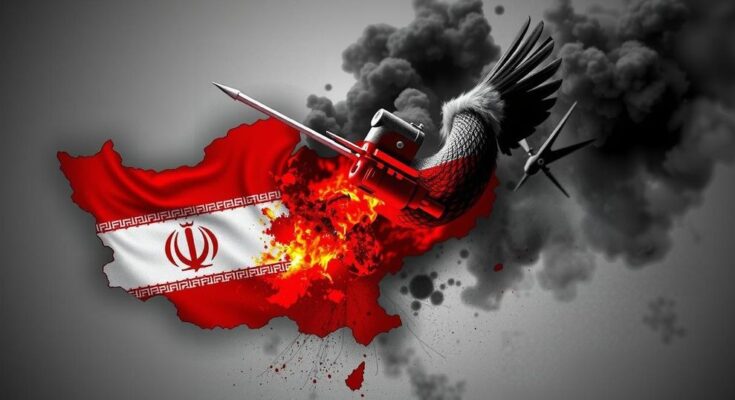The fall of Bashar al-Assad has critically weakened Iran’s “axis of resistance,” comprised of allies like Hezbollah and Hamas. The rapid collapse of Assad’s regime demonstrates the fragility of Iran’s regional influence as military logistics and strategies falter. Despite the survival of some allied factions, they have diminished in significance, marking a significant change in the Middle Eastern geopolitical landscape.
As the tenure of Syrian President Bashar al-Assad comes to an abrupt end, Iran’s extensive network of allies, known as the “axis of resistance,” is suffering substantial fragmentation. For nearly four decades, Iran invested heavily in cultivating this alliance to counterbalance U.S. and Israeli dominance in the region. However, the unexpected rapid downfall of Assad has significantly weakened the cornerstone of this alliance, raising concerns regarding Iran’s regional influence.
The recent Syrian rebellion against al-Assad saw his regime collapse in mere weeks, demonstrating an extraordinary lack of military resistance. Concurrently, Hezbollah, the Lebanese militant group, and Hamas, the Palestinian faction, remain embroiled in protracted conflicts with Israel, further diminishing their operational effectiveness. Though some Iranian-associated forces, such as Iraqi militias and the Houthis in Yemen, endure, they play increasingly marginal roles within the alliance. Their peripheral status indicates a diminished capacity for Iran to reconstruct the former strength of its coalition.
Renowned Middle East expert Robert Ford articulated the profound ramifications of this disintegration, stating, “The most significant regional development is this Iranian strategic loss.” The Syrian territory, under al-Assad, served as a crucial conduit for Iran’s logistics, enabling the transfer of resources to Hezbollah amidst Israeli attempts to sever supply lines, underscoring the strategic importance of Syria to Iranian interests. Without this crucial axis, Iran faces an uphill battle to regain its erstwhile influence, emphasizing a period of potential vulnerability within the region.
Iran’s “axis of resistance” comprises a coalition of allies, including Hezbollah in Lebanon, various Syrian factions, and groups in Iraq and Yemen, all functioning together to oppose U.S. and Israeli interests in the Middle East. Following the Syrian civil war, which led to the violent ousting of Assad, the stability of this network is thrown into jeopardy. The repercussions of Assad’s departure reverberate through the relationship dynamics of these factions, most notably Hezbollah and Hamas, who have suffered due to ongoing conflicts with Israel.
The ongoing crises within Iran’s axis of resistance reflect a significant geopolitical shift in the Middle East. As Assad’s regime falls and regional allies continue to weaken, Iran’s ability to influence the region is markedly diminished. This development may shift the balance of power away from Iran, creating opportunities for opposing factions to strengthen their hold in the region. The true extent of these changes will likely unfold over the coming years as regional dynamics continue to evolve.
Original Source: www.nytimes.com




